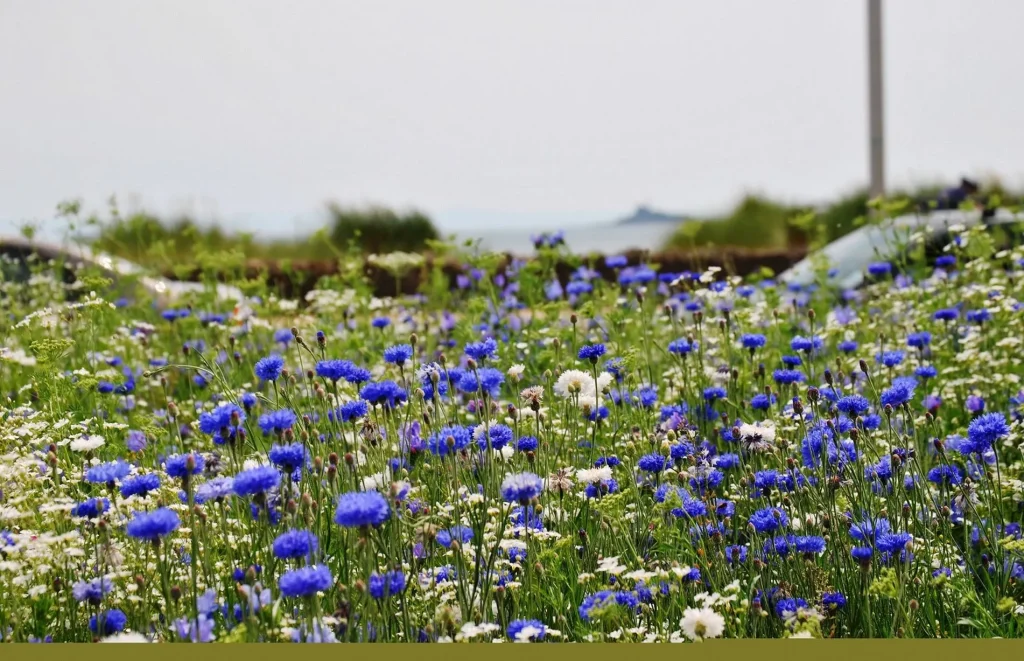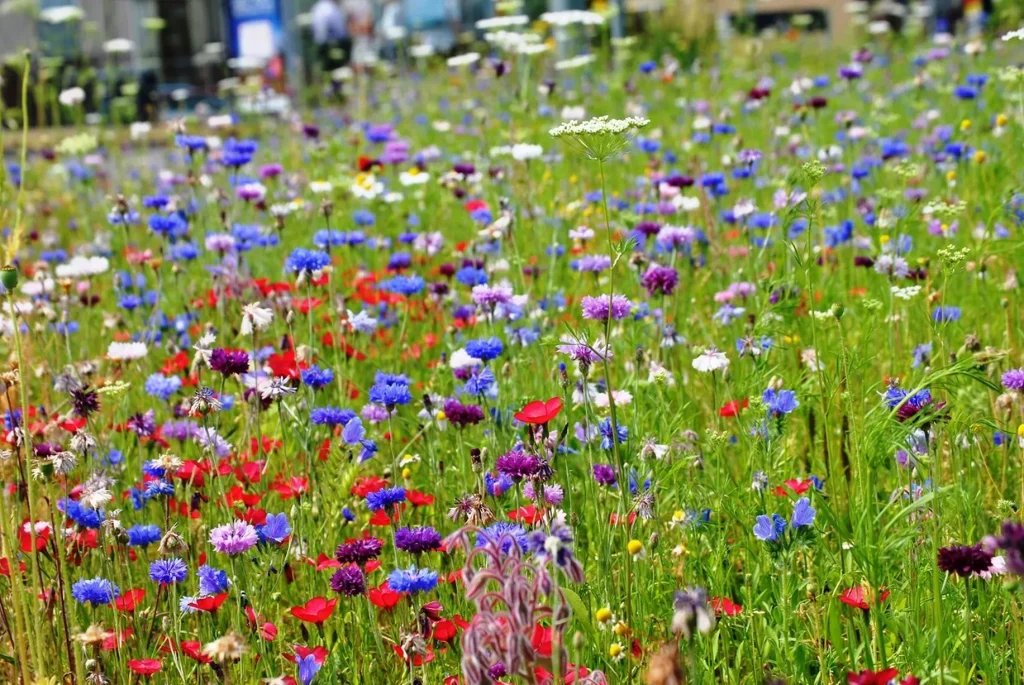We are writing to you with love — for bees, for blossoms and for Barnsley.
Pollinators are the beating heart of our natural world. Without them, our food system falters, our wildflowers fade, and our landscapes grow still and silent. But with them, Barnsley can bloom.
Across our borough – from the tops of Penistone to the edge of the Dearne – local residents are beginning to wake up to the idea that their gardens, schoolyards, verges and even window boxes can become havens for bees, butterflies and hoverflies. As beekeepers, gardeners, nature-lovers and proud Barnsley folk, we’re inviting you to join us in reimagining Barnsley as a pollinator paradise.
A Call for No-Mow Spring – Grow Don’t Mow
You may have heard of No Mow May — an initiative asking councils and residents alike to put down the mower and let the wildflowers grow. But the bees aren’t waiting for May. In Elaine Robinson’s powerful talk to the Barnsley Beekeepers Association, she highlighted April as a critical month for honey bees and wild pollinators alike – when colonies are growing, young are being raised, and fresh pollen is in short supply.
We’d love to see Barnsley lead the way by promoting a new campaign:
🌸 No Mow Spring – Grow, Don’t Mow
Leaving grass longer for just those few extra weeks would provide life-saving forage from dandelions, daisies, clover and spring bulbs – not weeds, but wild nourishment.
“97% of our flower-rich meadows have vanished since the 1930s — but your garden can bring the wild back. Even the smallest patch of grass can become a haven for bees, butterflies and beauty. Join the No Mow Movement: let your lawn grow, give power to the flowers, and be part of a blooming future for Barnsley and beyond.”
– Inspired by Plantlife, champions of No Mow May
Greening Our Grey Spaces
Across the borough, there are countless underused public spaces — verges, roundabouts, empty planters, and even the roofs of bus shelters. Instead of tarmac and gravel, these could become low-maintenance, low-cost green spaces.
Imagine:
- Bus stops with green roofs planted with drought-resistant, pollinator-friendly ground cover like creeping thyme, sedum, and wild marjoram.
- Roundabouts blooming with heleniums, echinacea, borage, oregano and catmint.
- Verges alive with yellow rattle, knapweed and oxeye daisy, managed not with constant mowing but with timed cuts and seeded wildflower mixes.
- School grounds and care homes with raised beds of lavender, rosemary, and hardy geraniums.
- Fruit trees in parks — cherry, apple and crab apple — each spring buzzing with life.



As Elaine reminded us, trees and shrubs offer thousands of flowers on a single plant. They matter just as much as meadows.
What Barnsley Can Plant (and Why It Works)
Based on both local research and bee behaviour, here are just a few plants we’d love to see more of across Barnsley:
| Plant | Season | Why It Matters |
|---|---|---|
| Pulmonaria, Muscari, Crocus (and of course Dandelions!) | Early spring | Vital pollen in April |
| Geranium Rozanne, Catmint, Echium | Summer | Long flowering, bee magnets |
| Sedum, Michaelmas Daisy, Ivy | Autumn | Final forage before winter |
| Willow, Rowan, Cherry | Early tree pollen | Supports colony build-up |
| Borage, Marjoram, Thyme | Summer herbs | Loved by bees and people alike |
| Wildflowers with Yellow Rattle | Throughout | Low-maintenance, rich habitat |
These are not fussy, ornamental plants. They’re resilient, sustainable, and attractive — to bees, and to people.
What Rosie Bee Research Tells Us About Pollinator Plants

Over nine years of careful study at sites in Oxfordshire and Monmouthshire, Rosie Bee researchers observed how many pollinators visited different plants grown in square-metre test plots. The results offer essential guidance for anyone – from home gardeners to councils – wanting to make planting choices that support bees, butterflies, and hoverflies.
Key Findings:
- Not all “pollinator-friendly” plants attract pollinators equally. Some surprisingly popular garden plants attract very few insects, even if labelled bee-friendly.
- Plant choice matters. The number of pollinators per square metre varied widely, proving that we can dramatically increase the value of our green spaces to nature by choosing the right plants.
- Both native and non-native plants can be excellent. Pollinators typically forage wherever nectar and pollen are accessible – whether the plant is native or not.
- A wide variety of flowers supports a wide variety of pollinators. Different species prefer different plants, so biodiversity in planting is essential.
- Healthy, well-positioned plants get more visits. Following the “right plant, right place” rule means more flowers and more pollinator food.
- Yearly variation is natural. Weather impacts pollinators and flowering, but long-term patterns matter more than single-year observations.
Rosie Bee’s full results include a ranking of top-performing plants by pollinator type, helping gardeners, councils, and landscapers make planting decisions that truly benefit wildlife. Here is the report.
Barnsley Council: A Missed Opportunity to Lead on Nature Recovery
At a time when the UK is recognised as one of the most nature-depleted countries on Earth, Barnsley Metropolitan Borough Council has yet to declare a Nature Emergency – a vital first step in acknowledging and acting on the biodiversity crisis. According to the Woodland Trust’s Nature Emergency UK campaign, Barnsley has not committed to an evidence-based action plan for nature recovery, not embedded nature into its strategic policies, and not pledged to manage 30% of council-owned land for wildlife by 2030. This is a missed opportunity for Barnsley to show leadership – and to work with local residents, schools, and community groups already stepping up to support pollinators and green spaces. We hope this blog, and your voices, help bring about the bold action nature needs. They appear to be the only council in South Yorkshire not to sign up.
Shared Responsibility, Shared Beauty
We know change takes time. But together – as local residents, educators, community groups and bee-friendly gardeners. Together, we can build a Barnsley that blooms. Some examples of things that could be done:
- A sign at wildflower verges explaining why it’s “messy”
- A pollinator corridor map linking parks, allotments, and apiaries
- Community growing kits to help families and schools plant bee-friendly patches
- Local seed swaps and plug plant giveaways
- A borough-wide Pollinator Pledge
Let’s be bold. Let’s be blooming brilliant.
In Love and Hope for Barnsley’s Buzzing Future
This isn’t just about honey. It’s about biodiversity. It’s about beauty. It’s about leaving something better behind.
Elaine Robinson showed us what one person, one field, one garden can do. Now imagine what a whole borough can achieve.
With hope, with flowers, and with deep appreciation for your work,
Richard Senior, Chairman of Barnsley Beekeepers Association (and friends of pollinators everywhere)

